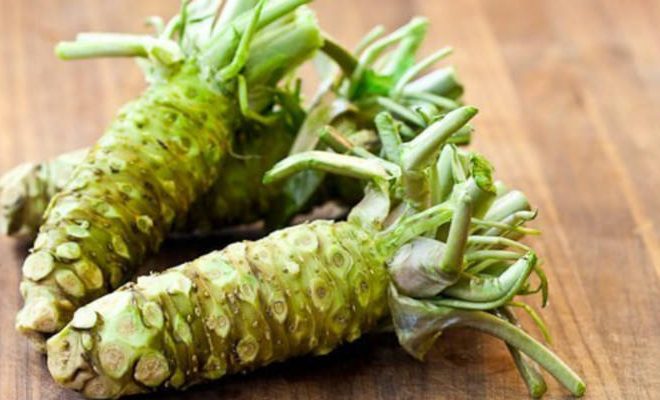
Dine In Catering
What’s Up With Wasabi?
Wasabi is a staple in Asian-themed restaurants, such as Pei Wei, especially in Japanese restaurants. The strong pungent flavors are similar to hot mustard but with a distinctive taste that makes it suitable for a wide range of dishes and desserts. Indeed, you can find wasabi in sushi, ice cream, and Kit Kat!
But there are plenty of other things that you may not know about wasabi. Here are a few of the interesting factoids about the light green food product sold in stem, dried powder, and paste forms.
Wasabi Isn’t a Horseradish
Wasabi is neither a horseradish nor the Japanese strain of the more common European horseradish although they are relatives, so to speak. Instead, the wasabi plant is an herbaceous plant endemic to Japan, as well as part of the cruciferous family of plants. For this reason, wasabi is a relative of radishes, mustard, and cabbages, which are also known for their spicy and sharp flavors.
Today, the most common cultivars used in modern wasabi cuisine are Eutrema japonicum known as Daruma and Mazuma.
Wasabi Is Actually a Medicinal Plant
While wasabi may be more popular today as a food ingredient, it was actually first used by the Japanese as a medicinal plant. It was traditionally served with sushi and sashimi, among other traditional raw fish dishes, to prevent food poisoning caused by diseases in the uncooked meat.
And modern science has proven them true! Scientists have discovered that wasabi contains allyl isothiocyanate, a volatile organosulfur compound with antibacterial and anti-inflammatory properties.
Basically, the wasabi in raw meat can inhibit bacterial growth and, thus, preventing upset stomach. In sushi preparation, for example, fresh grated wasabi is placed between the rice and raw fish for this reason. This also prevents the wasabi from losing its flavor; grated wasabi loses its flavor within 15 minutes after being exposed to air.
Wasabi Is Difficult to Cultivate
Unfortunately, wasabi only thrives in cool and moist environments, especially as its stem and root must be partially submerged in water. The plant cannot also be exposed to direct sunlight or else it will dry up.
Such is the difficulty of recreating its natural habitat that wasabi is extremely challenging to cultivate on a commercial basis. The result: The Japanese horseradish is very expensive with a single kilogram costing as much as US$160!
The wasabi powder and paste sold in supermarkets in the United States aren’t the genuine kind either. Experts estimate that only 1% of wasabi-labeled products are actually made from the wasabi plant – substitutes like horseradish are used instead.


0 comments